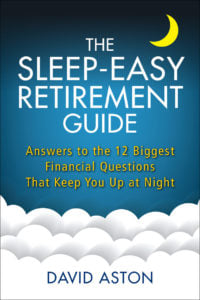Good news: Your RRSP is probably in better shape than you think
In his new book, MoneySense contributor David Aston says a “basic” retirement at age 65 can be achieved with just $375,000 in retirement savings for a single person or $200,000 for a couple.

 My colleague David Aston has just published his first book—and it’s one I believe any MoneySense fan who’s interested in retirement will want to read. Titled The Sleep-Easy Retirement Guide, it promises to answer “the 12 biggest financial questions that keep you up at night.”
First, a confession: When I was the editor of MoneySense
My colleague David Aston has just published his first book—and it’s one I believe any MoneySense fan who’s interested in retirement will want to read. Titled The Sleep-Easy Retirement Guide, it promises to answer “the 12 biggest financial questions that keep you up at night.”
First, a confession: When I was the editor of MoneySense









